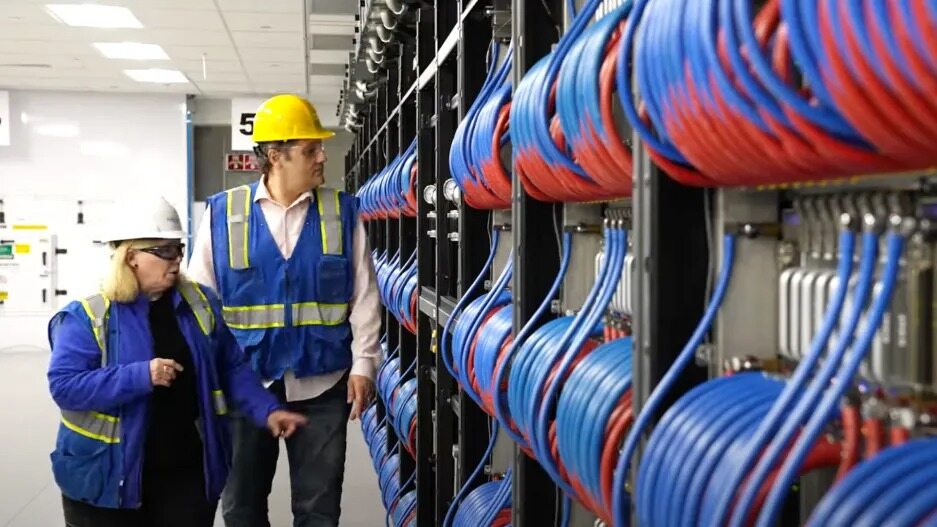- | 9:00 am
New megacomputer will perform 2 quintillion operations in a quarter of the time it took you to read this headline
Aurora, an exascale machine being built by Intel and Hewlett-Packard, could become the most powerful computer in the world—but others are on its heels.

The bar, when it comes to supercomputers, is about to be raised in a big way.
Meet Aurora, a computer that, when it is fully operational, will be able to perform 2 billion billion (technically, 2 quintillion) operations in a single second. And speeds that fast could lead to Aurora assisting in unimagined scientific breakthroughs.
The system is being built outside of Chicago by Intel and Hewlett-Packard. It has a footprint that’s the size of two tennis courts and weighs an estimated 600 tons and ultimately will run 60,000 graphics processing units (20,000 more than any known supercomputer today). And even though it’s far from complete and not expected to be 100% operational until next year, it’s already ranked as the second most powerful supercomputer on the planet.
Aurora will live at the Argonne Leadership Computing Facility in Illinois—and it’s not the only new supercomputer on the horizon. El Capitan, which will begin to roll out next year, will be located at the Lawrence Livermore National Laboratory in California and it could ultimately be even faster than Aurora. And a system called Eagle, installed by Microsoft in its Azure cloud, just made its debut on the Top500 list of supercomputers at number three
Once it is fully operational, Aurora may well be the most powerful artificial intelligence on the planet, if only for a while. And scientists hope to use that computational power to do everything from make climate change forecasts more reliable, helping planners to prepare for possible floods or wildfires, to mapping connections in the human brain, a task that will take months or even years due to the complexity, even with Aurora’s vast resources.
Before all of that, though, Aurora will help design and produce batteries that charge faster and are more powerful. It will also compile data from a massive X-ray machine to search for minor flaws in those batteries that humans often miss, which can result in fire threats.
Supercomputers like Aurora are known as exascale machines. The biggest, at present, is called Frontier, which is capable of 1,000,000,000,000,000,000 (the aforementioned quintillion) calculations per second. It was supercomputers like this that helped scientists design drugs that fought COVID-19. (Aurora, when it’s fully operational, will have 70% more memory than Frontier.)
What’s interesting to note about devices like Aurora is how they underscore just how quick the evolution of computing has been. As little as 30 years ago, a supercomputer had processing power that was roughly on par with one of today’s laptops. The Summit supercomputer at the Oak Ridge National Laboratory, which was the world’s fastest machine in 2020, had roughly the same computing power as 1 million laptops.
Today, Summit is just the seventh most powerful computer in the worldwide rankings. (Those rankings are not complete, it’s worth noting. China, for example, does not publish the processing capabilities of its exascale computers.) And newer, bigger devices are being put together all the time.
Even Elon Musk is getting in on the action. Tesla is spending $1 billion to create an exascale supercomputer called Dojo, which it plans to use to analyze visual data to train its autonomous driving systems.
As for Aurora, while it’s still far from at peak capacity, researchers have already used the still-under-construction system to screen 22 billion drug molecules an hour, which could help speed up the discovery of new drugs in the months and years to come.






































